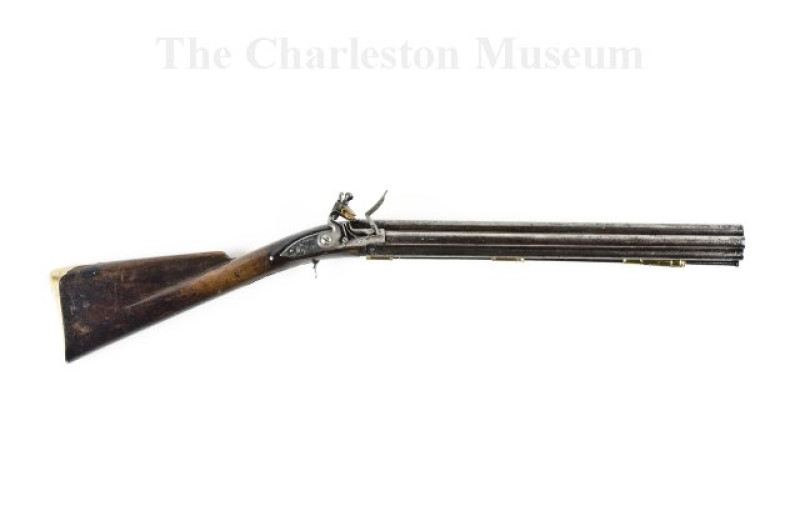Volley Gun

Contact The Charleston Museum for image use and credit instructions.
Description:
This seven-barreled flintlock weapon is a type of volley gun designed to fire all barrels at once. The fire from the pan entered the chamber which fired the central barrel. Six apertures radiated out from the chamber to the other barrels which then fired simultaneously. Recoil was kept within reasonable limits by the weight of the weapon and development of a satisfactory powder charge. The smooth bore barrels and lock are made of steel and the butt plate, lock retainer plate and ramrod retainers are made of brass. The trigger guard is missing. The "half cock" action is operable while the full cock is not. Limited supplies of these guns were used in the Great Siege of Gibraltar in 1782.
James Wilson, a British engineer, invented this weapon for the Royal Navy. Designed to be fired from atop a mast (crow's nest) to break up an opposing ships' rigging. Though it was created by Wilson the gun was named after Henry Nock, the London-based armaments manufacturer contracted to build the gun.
- Date: 1779-1782
- Dimensions: L-93.5 Dia-5.84 cm
- Makers Mark: Tower mark with crown on lock plate. Lock bears royal (GR) crest and _OWER (TOWER) which indicates official ordinance property. Each barrel bears small Royal proofmark. One barrel bears H. NOCK, the
- Collection: Weaponry Collection
- Object Name: Volley Guns
- Object Id: 1989.50.1
- Search Terms

